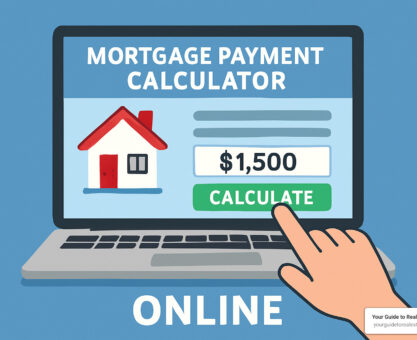What is Cash-Out Refinancing & How Does It Work?
Cash out refinancing explained in simple terms: It’s a way to tap into your home’s equity by replacing your current mortgage with a larger one and receiving the difference in cash.
Quick Definition: A cash-out refinance lets you borrow against your home’s equity by taking out a new mortgage larger than what you currently owe, with the difference paid to you in cash at closing.
Here’s what you need to know:
| Cash-Out Refinance Basics | Explanation |
|---|---|
| What it is | A new mortgage that replaces your existing one with a larger loan amount |
| How much cash | Typically up to 80% of your home’s value minus your current mortgage balance |
| Requirements | Usually 620+ credit score, 20% remaining equity, 45% max debt-to-income ratio |
| Timeline | 30-45 days from application to funding |
| Common uses | Home improvements, debt consolidation, education expenses, emergencies |
If you’ve been making mortgage payments for several years or your home has increased in value, you likely have built up equity. This equity is the difference between your home’s current market value and what you still owe on your mortgage.
A cash-out refinance turns that equity into usable cash without selling your home.
For example, if your home is worth $300,000 and you owe $100,000 on your mortgage, you have $200,000 in equity. With a cash-out refinance at 80% loan-to-value, you could potentially access up to $140,000 in cash (after paying off your existing $100,000 mortgage).
Why consider it? The interest rates on cash-out refinances are typically lower than credit cards, personal loans, or other forms of borrowing because your home serves as collateral.
But be careful – you’re essentially starting over with a new mortgage, potentially with a different interest rate and term, and your home is at risk if you can’t make the payments.

Cash Out Refinancing Explained: Quick Definition

Imagine turning the walls of your home into actual dollars you can spend. That’s essentially what happens with a cash-out refinance. When we talk about cash out refinancing explained in everyday terms, we’re looking at a clever financial move that transforms your home’s “invisible” value into real money in your pocket.
Home equity is simply the portion of your home you truly own—your property’s current market value minus whatever you still owe on your mortgage. It’s like a savings account built into your house that grows as you pay down your loan and as your home’s value increases.
A cash-out refinance is a brand-new first-lien loan, which means it completely replaces your existing mortgage and takes priority over any other loans against your property. The magic happens because your new loan is larger than what you currently owe, and you get to pocket that difference as a lump sum at closing.
Here’s the cherry on top: the cash you receive isn’t considered income by the IRS, making it completely tax-free. You’re not earning this money—you’re borrowing against something you already own, using your home as collateral.
Why Lenders Allow It
You might be wondering, “Why would my bank give me more money when I already have a mortgage?” Good question!
The answer lies in something called the loan-to-value (LTV) ratio. This percentage represents how much of your home’s value you’re borrowing. Most lenders cap cash-out refinances at 80% LTV, which means you need to maintain at least 20% equity in your home.
This equity cushion protects the lender if property values take a dip or if you run into trouble making payments. It’s their safety net, and it’s why they’re comfortable lending you more money.
Veterans enjoy special privileges in this area. VA loans may allow eligible service members to borrow up to 90% or even 100% of their home’s value in certain situations—one of many well-deserved benefits for those who’ve served our country.
Etymology & Banking Mechanics
The word “refinancing” has interesting roots: “re” from Latin meaning “again,” combined with “financing” (providing funds). So refinancing literally translates to “funding again.”
When banks issue cash-out refinances, they’re actually participating in a fascinating process of money creation within our banking system. It’s not just moving existing money around—banks are creating new money in the form of credit, backed by the value of your home.
Banks must follow certain rules when doing this. They need to maintain specific reserve requirements and comply with international regulations like the Basel III capital rules. These guidelines ensure banks keep enough liquid assets on hand to meet their obligations.
As the Bundesbank explains in their research on money creation, this process creates what economists call “demand deposits” in the banking system. In everyday terms, when you get a cash-out refinance, your bank isn’t just transferring existing money to you—it’s creating new money backed by your home’s value.
Think of it this way: your home’s equity is like potential energy, and a cash-out refinance converts it to kinetic energy—money you can actually use for whatever life throws your way.
How It Works, Requirements & How Much Cash You Can Get

So, how does cash out refinancing actually work, and how do you know if you qualify? Let’s walk through the steps together—no fancy finance degree required!
First, the process feels a lot like getting your original mortgage (but with a little less first-time homebuyer stress). You’ll start by applying for a new loan with your lender. Expect questions about your income, debts, and credit—just like last time. Next up, a professional appraiser will come by to figure out your home’s current value. This number is key, since it determines how much equity you have to work with.
Once the appraisal is in, your lender will review your entire financial picture—credit history, income, assets, and that fresh appraisal. This underwriting step is where the lender gives everything a final once-over. If all looks good, you’ll get a Closing Disclosure to review the final terms and costs.
The big moment comes at closing. You’ll sign the paperwork, your old mortgage is paid off, and the leftover cash lands in your bank account—often within a few days. The whole process takes about 30 to 45 days from when you first apply to when you receive your cash, though sometimes it runs a bit longer if there are hiccups.
How much can you get? The answer depends mostly on your home’s current value and how much you still owe. Most lenders let you borrow up to 80% of your home’s appraised value (with VA loans sometimes allowing up to 100%, though 90% is more common). Here’s the basic formula:
- Take your home’s value, multiply by 0.8 (for 80%), then
- Subtract your current mortgage balance.
That’s your maximum possible cash-out before closing costs. Don’t forget—closing costs usually run between 2% to 6% of the new loan amount, so be sure to budget for those as well.
Let’s say your home is worth $300,000 and you still owe $100,000. Multiply $300,000 by 0.8 to get $240,000. Subtract your mortgage balance ($100,000), and you could get up to $140,000 in cash—before deducting closing costs. If closing costs are $10,000, your net cash is $130,000. Handy, right? If you want to see what your new payment might look like, pop over to our Mortgage Payment Calculator.
Cash Out Refinancing Explained: Steps Overview
Let’s break it down in plain English, step by step:
First, check how much equity you have by subtracting your current mortgage balance from your home’s value. Next, apply the 80% rule: multiply your home’s value by 0.8 to see the maximum loan you can take (or use your lender’s cap). Then, subtract what you still owe—that’s the cash you might pocket.
But there’s more to it than just the math. You’ll need to make room for closing costs, which can eat into your payout. Typically, they’re 2%–6% of the loan amount, so don’t be surprised if a chunk goes to fees.
The whole process, from application to cash in hand, usually takes 30–45 days—sometimes faster, sometimes (much) slower if the market is busy or your paperwork needs extra attention.
Eligibility Checklist
Before you get too excited about all that extra cash, make sure you’re eligible. Most lenders look for a credit score of at least 620; some government-backed loans, like FHA, go down to 580, but higher scores mean better rates. Your debt-to-income ratio (DTI)—that’s your total monthly debts divided by your gross monthly income—should be 45% or less after the new mortgage payment.
Property type matters too. You can refinance your main home, a second home, or even an investment property, but investment properties tend to come with stricter limits (often maxing out at 75% LTV).
Most lenders have a seasoning requirement—they want you to have owned your home for at least six months before cashing out. VA loans require 210 days, and FHA loans require a full year. You may also need cash reserves—extra savings set aside, especially if you’re refinancing a rental or the numbers are tight.
Borrowing Limits & Examples

Let’s bring this to life with an example. Imagine you bought a house for $250,000 five years ago. Today, thanks to steady payments and a rising market, your home is worth $400,000 and you owe $200,000.
You’ve built up $200,000 in equity—half your home’s value! With a cash-out refi at 80% LTV, you could get a new loan for $320,000 (that’s 80% of $400,000). After paying off your old mortgage ($200,000), you’re looking at a potential cash-out of $120,000.
But remember those closing costs—let’s say they’re about $9,600 (3% of $320,000). After subtracting that, you could end up with $110,400 in cash. That’s a pretty substantial chunk of change!
If you’re a qualified veteran, you might be able to go even higher with a VA cash-out refinance—sometimes up to 100% of your home’s value. Just keep in mind, the rules vary by lender.
When it comes to cash out refinancing explained, knowing the process, requirements, and limits helps you avoid surprises—and puts you in control. If you want more details or need help running the numbers, Your Guide to Real Estate is always here to help!
Pros, Cons, Costs & Risks

When you’re considering tapping into your home’s equity, it’s a bit like deciding whether to break into your piggy bank. There’s money there, sure—but is now the right time to use it? Let’s walk through what you should consider before taking the plunge.
The Bright Side of Cash-Out Refinancing
One of the most compelling reasons homeowners choose a cash out refinancing explained option is the interest rate advantage. While credit cards might charge you upwards of 20% interest and personal loans often range from 8-36%, a cash-out refi typically offers much friendlier rates because your home serves as collateral.
If you’re juggling multiple debt payments each month, consolidating everything into a single mortgage payment can bring welcome relief to your financial life. No more remembering five different due dates or dealing with multiple creditors—just one payment to manage.
There’s potentially good news at tax time too. When you use your cash-out funds for home improvements, the interest you pay might be tax-deductible. I always recommend chatting with a tax professional about your specific situation, but this can be a nice bonus.
Having access to a substantial lump sum opens doors that might otherwise remain closed. Whether you’re dreaming of that kitchen renovation you’ve been pinning on Pinterest for years or facing a significant expense like college tuition, a cash-out refi puts real money in your hands when you need it.
And the cherry on top? You have complete flexibility in how you use those funds. While some uses make more financial sense than others (more on that later), the decision is ultimately yours.
The Cautionary Side of the Equation
Before you sign on the dotted line, understand that cash-out refinances typically come with slightly higher interest rates—usually about 0.125% to 0.5% higher than a standard rate-and-term refinance. This small difference can add up over the life of your loan.
It’s also worth considering that you’re essentially starting over with your mortgage. If you’ve been diligently making payments for 10 years on a 30-year mortgage, a new refinance resets that clock. You might end up paying more interest over the long haul, even with a lower rate.
Perhaps the most sobering consideration is foreclosure risk. Your home isn’t just your castle—it’s now collateral for this larger loan. If financial hardship strikes and you can’t make payments, you could lose your home. This isn’t meant to scare you, but it’s a reality worth acknowledging.
The closing costs can take a significant bite out of your proceeds too. With fees typically running between 2-6% of the loan amount, a $300,000 refinance might cost $6,000-$18,000 in closing costs. That’s money that won’t make it into your pocket.
If your loan-to-value ratio exceeds 80% (which can happen with FHA loans), you’ll also face mortgage insurance premiums. These additional monthly costs can chip away at the benefits of refinancing.
Finally, be prepared for a temporary dip in your credit score. The hard inquiry and new account will likely cause a small decrease, though this typically rebounds within a few months if you make regular payments.
Typical Fees & Closing Costs
When budgeting for your cash-out refinance, closing costs deserve careful attention. Here’s what you can expect to pay:
| Fee Type | Typical Cost | $200,000 Loan | $400,000 Loan |
|---|---|---|---|
| Origination fee | 0.5-1% | $1,000-$2,000 | $2,000-$4,000 |
| Appraisal | $300-$500 | $300-$500 | $300-$500 |
| Title search/insurance | $300-$2,000 | $300-$2,000 | $500-$2,500 |
| Credit report | $30-$50 | $30-$50 | $30-$50 |
| Recording fees | $25-$250 | $25-$250 | $25-$250 |
| Discount points (optional) | 0-3% | $0-$6,000 | $0-$12,000 |
| Total range | 2-6% | $4,000-$12,000 | $8,000-$24,000 |
You might come across lenders advertising “no-closing-cost” refinances. While these can seem attractive, they typically compensate by charging a higher interest rate. This might save you money upfront but could cost more over time if you keep the loan for many years. It’s always worth doing the math for your specific situation.
Risk Mitigation Tips
If you decide a cash-out refinance makes sense for your situation, here are some practical ways to minimize the risks:
Keep a healthy equity cushion in your home—ideally at least 20%. This not only helps you avoid mortgage insurance but also provides protection against market fluctuations. Think of it as your home’s financial airbag.
Be strategic about how you use the money. Using home equity for a vacation or shopping spree might feel good in the moment, but these expenses won’t add value to your financial future. Instead, focus on needs rather than wants, or investments that will pay dividends over time.
Prioritize home improvements that boost your property value. Kitchen renovations, bathroom updates, and energy-efficient upgrades typically offer the best return on investment. That beautiful swimming pool might not add as much value as you’d hope.
Don’t settle for the first offer you receive. Take the time to shop around and compare offers from at least 3-5 different lenders. Even small differences in interest rates or fees can translate to thousands of dollars over the life of your loan.
Carefully weigh no-closing-cost options against traditional refinances. Calculate the break-even point to determine which option makes more sense based on how long you plan to stay in your home.
Finally, ensure your new payment fits comfortably within your monthly budget. Financial experts often recommend that your housing costs shouldn’t exceed 28% of your gross monthly income. Leave yourself breathing room for emergencies, retirement savings, and life’s other financial goals.
When used wisely, a cash-out refinance can be a powerful financial tool. The key is approaching it with eyes wide open, understanding both the opportunities and the obligations it brings to your financial future.
Alternatives, FAQs & When It Makes Sense

So you’re thinking about tapping into your home’s equity, but wondering if cash out refinancing explained fully covers all your options? You’re right to explore alternatives – different financial tools suit different situations, and what works for your neighbor might not be right for your unique circumstances.
While cash-out refinancing offers that appealing lump sum by replacing your existing mortgage, it’s just one path among several. A Home Equity Line of Credit (HELOC) works more like a credit card secured by your home, giving you flexibility to borrow only what you need during a typical 10-year draw period, followed by a 20-year repayment phase. This can be perfect if you’re funding a project with uncertain costs or need occasional access to funds.
A Home Equity Loan (sometimes called a second mortgage) might be your best bet if you need a fixed amount but don’t want to refinance your primary mortgage. You’ll keep your original loan intact while adding a second fixed-payment loan against your equity – especially valuable if your current mortgage has a fantastic interest rate you don’t want to lose.
For those who prefer to keep their home out of the equation entirely, a Personal Loan offers funding based purely on your creditworthiness. Yes, the interest rates run higher than home-secured options, but your home isn’t at risk if payments become difficult.
Homeowners 62 and older have another option: a Reverse Mortgage converts home equity into cash without requiring monthly payments. The loan gets repaid when you sell, move out, or pass away – potentially offering peace of mind for retirees on fixed incomes.
If crushing debt is your main concern, a dedicated Debt Consolidation Loan specifically designed to combine multiple debts might be worth exploring before putting your home on the line.
Your best choice depends on several factors – how much money you need, your plans for the funds, current interest rate environment, and your overall financial picture. For a deeper dive into mortgage options, check out our Understanding Mortgages guide.
Cash Out Refinancing Explained: FAQ Snapshot
I hear the same questions from homeowners considering this option, so let’s clear up some common confusions:
Q: Do I have to pay taxes on cash-out refinance proceeds?
A: Good news – you don’t! The IRS considers these funds a loan, not income. Even better, if you’re using the money for home improvements, you might be able to deduct the interest come tax time (though always check with your tax professional).
Q: Will I need an appraisal for a cash-out refinance?
A: In most cases, yes. Your lender needs to know exactly what your home is worth now to calculate how much you can borrow. This isn’t just red tape – it protects both you and the lender from overextending.
Q: Are cash-out refinance rates higher than my original mortgage rate?
A: It’s complicated. If overall market rates have dropped since you got your original mortgage, your new rate might actually be lower despite the small premium lenders typically charge for cash-out transactions. If rates have risen in general, then yes, expect a higher rate. Today’s market conditions matter more than the cash-out aspect.
Q: How will my monthly payment change after refinancing?
A: This depends on your new interest rate, loan amount, and term length. Even if you borrow more, your payment might stay surprisingly similar if you secure a significantly lower interest rate. Our mortgage calculator can help you run the numbers for your specific situation.
Q: Will a cash-out refinance hurt my credit score?
A: Initially, you’ll see a small dip from the credit inquiry and new account. But if you use the proceeds to pay down high-interest debt, your score might actually improve over time as your credit utilization ratio drops. Many borrowers see their scores bounce back within a few months.
Cash-Out vs. Home Equity Products
Understanding how these options differ can save you thousands over the life of your loan:
When comparing a cash-out refinance to a home equity loan, the refinance replaces your existing mortgage completely, while a home equity loan adds a second payment alongside your first mortgage. Refinances typically offer lower interest rates, but come with higher closing costs. They can also provide larger loan amounts since they’re based on your home’s entire value minus what you owe.
The difference between a cash-out refinance and a HELOC is mainly about flexibility versus certainty. A refinance gives you all your money upfront with a fixed rate (in most cases), while a HELOC lets you draw funds as needed with typically variable rates. If you know exactly how much you need and want payment predictability, refinancing might be better. If you want financial flexibility and only plan to use the funds occasionally, a HELOC could save you interest in the long run.
Research on debt consolidation shows homeowners who leverage home equity to pay off high-interest debt save an average of $300 monthly in payments. However, this strategy only works if you address the spending habits that created the debt initially – otherwise, you might end up with the same credit card debt plus a bigger mortgage.
When a Cash-Out Refi Is a Good Idea
A cash-out refinance really shines in certain scenarios:
Home improvements with good ROI can be an excellent use of your equity. Kitchen remodels, bathroom updates, and energy-efficient upgrades typically return 70-80% of their cost in home value appreciation, making them financially smart choices. You’re essentially converting equity into more equity, just in a different form.
Debt consolidation makes mathematical sense when you’re drowning in high-interest debt. Imagine consolidating $20,000 of credit card debt at 20% interest into a mortgage at 5% – you’d save approximately $3,000 annually in interest alone. That’s money back in your pocket every month.
Education expenses can be a wise investment when mortgage rates undercut student loan rates. Using home equity to fund education that increases earning potential can pay dividends for decades.
Business investment might be appropriate if you have a solid business plan with strong growth potential. Many successful businesses got their start with home equity funding – just be sure you’ve done your homework on the business viability.
Emergency fund establishment provides peace of mind, though this should generally be a last resort. Having liquid cash available for true emergencies can prevent financial catastrophe, but using home equity for this purpose adds risk to your financial situation.
Before signing any paperwork, conduct a simple break-even analysis: divide your closing costs by your monthly savings to determine how many months it will take to recoup those costs. If you’ll stay in your home longer than that break-even point, refinancing makes financial sense.
As mortgage expert Victoria Araj notes: “Cash-out refinancing is beneficial if you can reduce the interest rate on your primary mortgage and make good use of the funds you take out.” That last part is crucial – the value of a cash-out refinance ultimately depends on what you do with the money.
Conclusion
Whew! We’ve covered a lot of ground in our cash out refinancing explained guide. By now, you should see that this financial tool can be a real game-changer when used thoughtfully. Tapping into your home’s equity gives you access to substantial funds at interest rates that credit cards and personal loans simply can’t match.
But let’s be real for a moment. Your home isn’t just a piggy bank – it’s where your family makes memories, where you feel safe, and likely your most valuable asset. When you use it as collateral, you’re making a serious commitment.
Before you take the plunge, take a breath and consider:
Your future plans matter enormously here. If you’re dreaming about moving within the next couple of years, those hefty closing costs might not make financial sense. You need time to recoup those expenses!
Today’s interest rate environment should influence your decision too. Compare your current mortgage rate with what’s available now. Sometimes even a quarter-point difference can mean thousands of dollars over the life of your loan.
How you’ll use that cash is perhaps the most important consideration. The best uses either build more value (like that kitchen renovation that’s been on your wish list) or reduce your overall costs (like wiping out high-interest credit card debt). Using home equity for a dream vacation? That’s rarely the wisest choice.
Your budget comfort level shouldn’t be stretched to the breaking point. That new monthly payment needs to fit comfortably within your financial plan, with room to spare for life’s inevitable surprises.
Ready to move forward? Here’s your action plan:
First, check your credit score and address any issues. Next, get a realistic estimate of your home’s current value (hint: online estimators are just a starting point). Then calculate how much cash you might actually receive after paying off your current mortgage and covering closing costs. Shop around – different lenders offer surprisingly different terms. Finally, start gathering those documents you’ll need – pay stubs, tax returns, bank statements, and the like.
At Your Guide to Real Estate, we believe informed homeowners make better decisions. We’re here to help you steer the complexities of home financing with confidence. For more insights about mortgages and home financing options, our Understanding Mortgages: A Beginner’s Guide to Home Loans provides even more helpful information.
Your home represents both shelter and opportunity. Use its equity wisely, and you can strengthen your financial foundation for years to come. After all, the smartest homeowners don’t just live in their homes – they make their homes work for them.




















